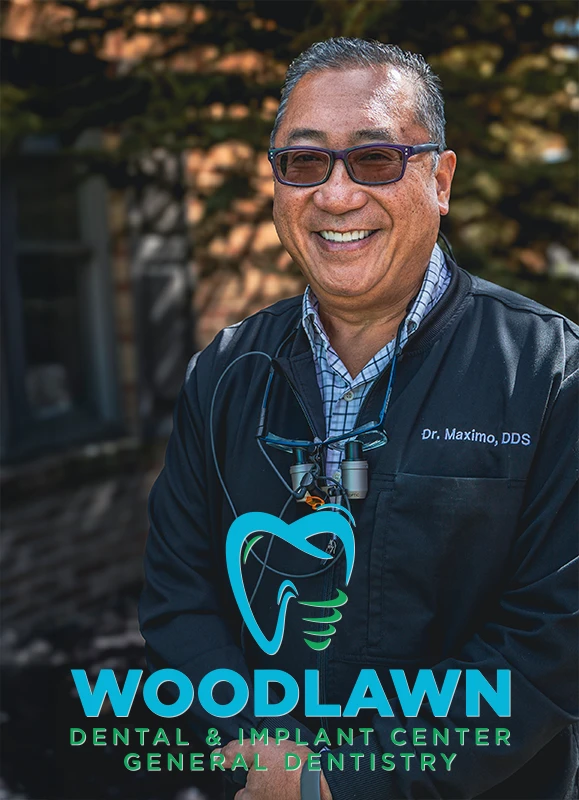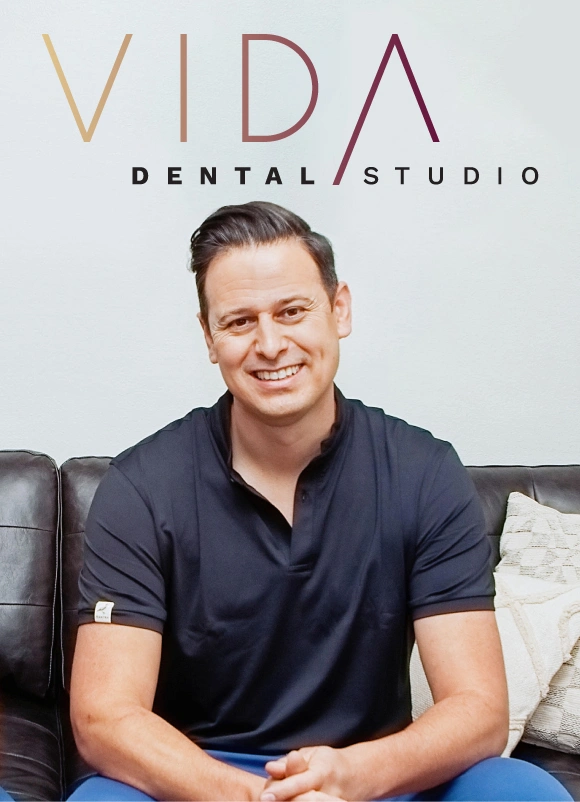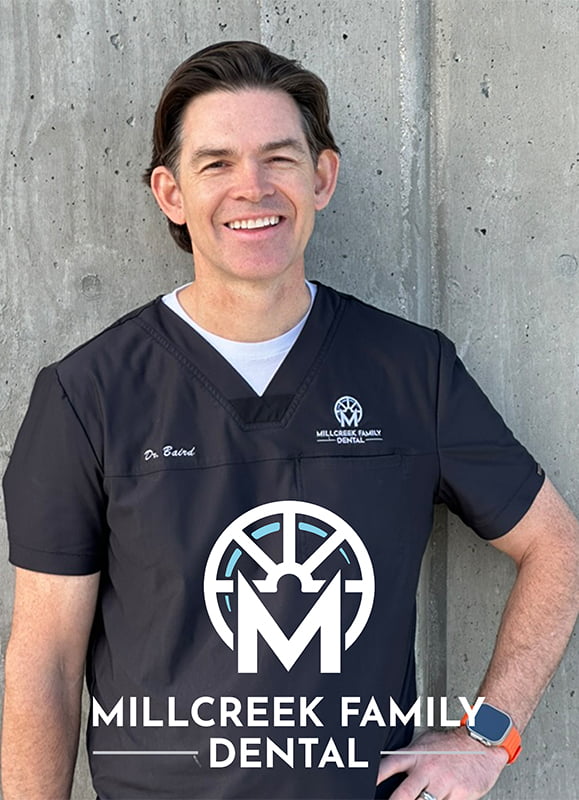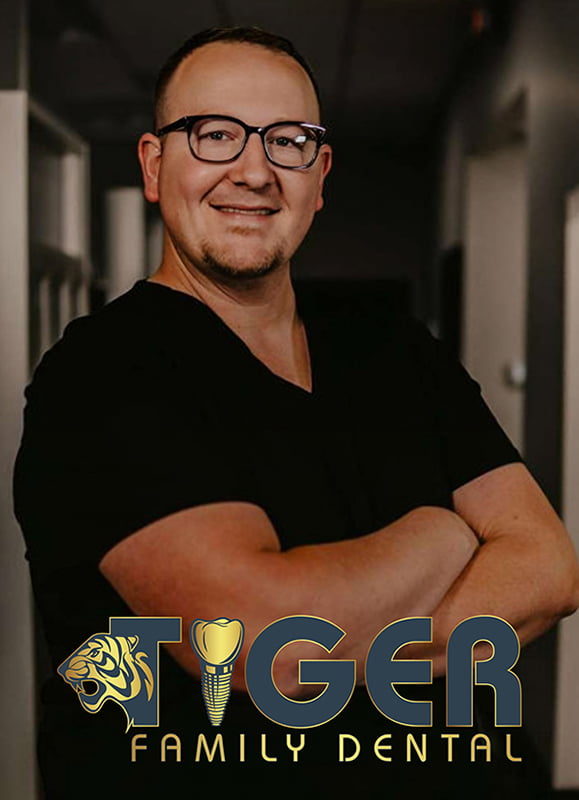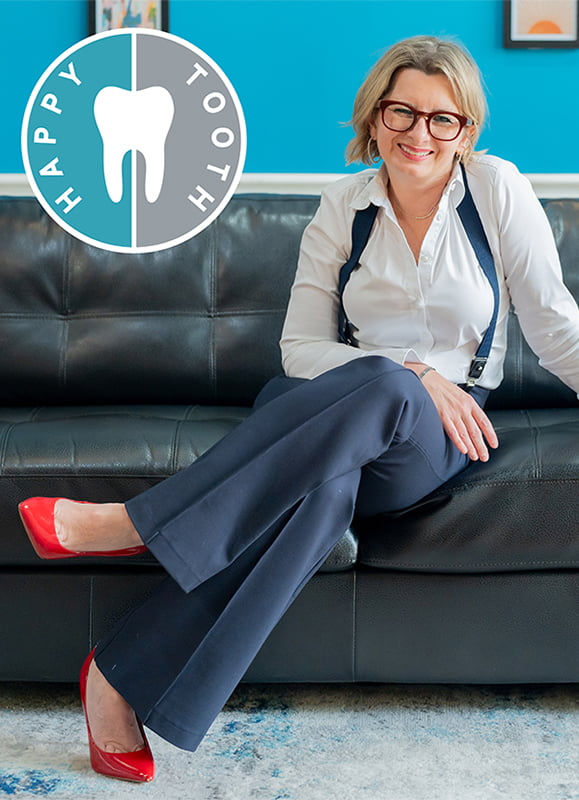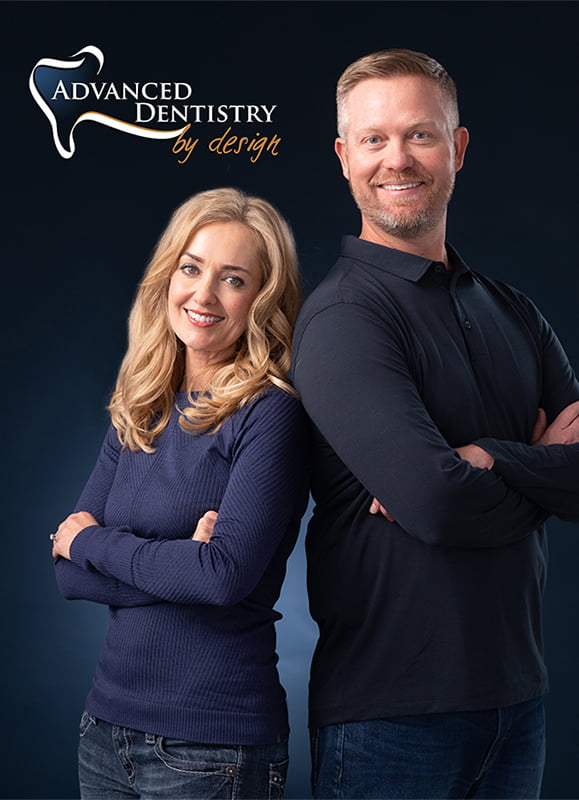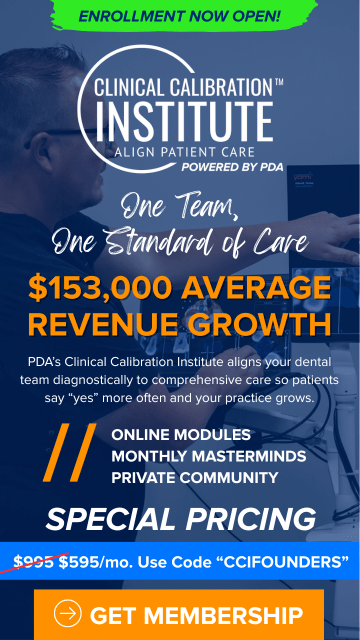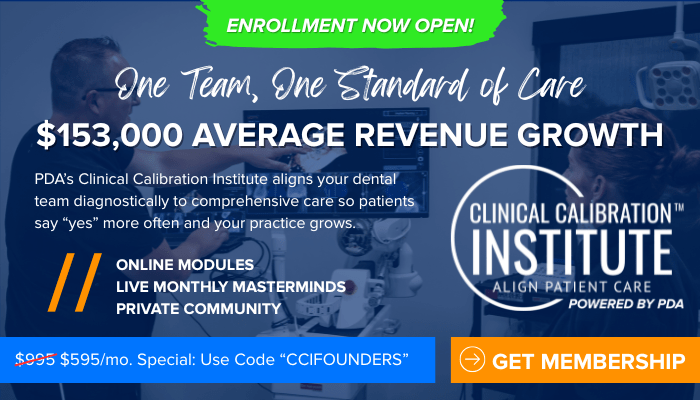Episode 155 – Treat the Disease Not Just the Damage (Part 1) with Dr. Kim Kutsch
“We need to look at the patient as a whole and look at what caused that disease.” -Dr. Kim Kutsch
That’s the way we’ve always done it.
How often have you heard that phrase in dentistry? While there may be some things to be said for doing things how you’re supposed to, when you’re not seeing the results, it’s time for a new strategy. Dr. Kim Kutsch, founder of CariFree, applies this mentality to the health of his patients.
He was doing everything he knew how to do. His patients were doing everything he wanted them to. And they were still fighting decay.
“If we’ve been doing things like this for 60 years and we are still seeing these issues, there’s got to be a better way,” says Dr. Kutsch.
“We need to do more than just treat the results of the disease. We need better outcomes of our treatments. As a profession, we need to go to the root cause of the disease for the health of our patients.”
We love to make your life easier! Join us today with the first part of our conversation with Dr. Kim Kutsch as we challenge the status quo by uncovering:
- A new perspective on patient risk assessment and care
- Patients’ changing awareness of disease
- Unique ways to help patients understand the causes of their problems
Never miss an episode! Subscribe on iTunes & Spotify. Visit us at http://www.everydaypracticespodcast.com
EPISODE TRANSCRIPT
Regan 0:01
Regan Robertson here with productive dentist Academy. Get ready to join your favorite podcast host Dr. Bruce B. Baird, Victoria Peterson, Dr. Chad Johnson and myself Regan Robertson at the nation’s number one dental business course that guarantees practice growth. That’s right, full emergency ease so you can consistently produce more, and align your team for results without compromising excellent patient care. Productive dentist Academy has a special running this month that you can activate immediately. It’s called the PDA productivity bundle. And we put this together so that you could attend this workshop which is happening September 22, to the 24th in Frisco Texas at the Hyatt Regency, along with tools to make sure that not only are you getting great education on how to increase your productivity, how to communicate better with your team and your patients, increase your case acceptance, authentic market practice and more. You also get a two hour business advisory session before the workshop to really get clear on what matters to you most so that you can be set up for success at the workshop. And following the workshop you get 12 month access to PDA on demand. That is the entire productivity workshop on demand for you to make sure that you are doing everything you can in your power to soak up all of that CTE and implement it come Monday morning, the next month and the next month and the next month for 12 months down the line. Registration is now open. The tuition cost is $2,195 which is ridiculous because it’s regularly $5,528 for the productivity workshop attendance to our business advisory session and 12 months access to PDA on demand. Hop on over right now to www dot productive dentists.com/workshop to grab your registration today. Again, that is www dot productive dentists.com/workshop If you cannot wait and you have to have it right now, email Brent b, r, e and t at productive dentists.com. That’s Brent, b r e n t at productive dentists.com and we will save you a seat. I look forward to seeing you there.
I have a question for you. How would you feel if you were doing everything you’d been taught to do? Your patient was doing everything you told them to. And despite all of your combined efforts, your patient continued to suffer from disease. The reality is this does happen quite a bit. And it can be really frustrating. Doctor chat and I believe you don’t deserve to experience this. That’s why we’ve invited renowned dentists Dr. Kim, coach, founder of carry free on everyday practices. Dr. Coach’s lifelong passion has been the prevention of dental caries. He has written over 100 articles on caries prevention, and it’s a revolutionary advocate for patient health. When I think of the Super Bowl, this is Dr. Kim kuj. And what it means for dentistry he is at the top of his game, and it’s only getting better. And the first part of this two part series, we’re going to discuss why it’s important as dentists to be courageous and challenge the status quo as advocates for their patient’s health. Let’s dive in.
Yeah, so I liked I liked where where we were going with that with that there’s a lot to be done, there’s a lot more to be done. As far as the that patient education goes, I think that’s really, really critical. It’s something that we just can’t We can’t take it for granted. But in the day to day business, we sure can have a tendency to,
Dr. Kim Kutsch 3:41
yeah, well, we get so focused on, you know, we’re wearing loops, right, and we get focused on the individual tooth surface that we’re trying to restore. And, and, you know, so our attention, and our focus just goes to that. And you know, and we really need to step back and look at the person as a whole. And then we really need to go upstream and go, what caused that. Right, you know, and let’s talk about that. And I think that’s where we can most help our patients understand, you know, what’s causing their diseases in their mouth. And besides just treating the results of those diseases, and it’s also the work that we need to do with the profession to help understand that we need to go there. Right, and rather than just focus on, you know, new restorative materials and cements and you know, and and, and, you know, preparation design or what have you that we really need to step back if we’re going to be successful at treating these diseases, and really having better outcomes for patients. That’s really a focus that we have to go up and upstream and look at the cause. And I think that’s where we as a profession need to go and that’s where really we, you know, you and I and Chad really can help our profession itself. In terms of just making them aware of that, you know, what’s going on in that transition.
Dr. Chad Johnson 5:04
So your clinical career then started right out of school and 79 it from Oregon. Is that right? Yeah, that’s correct. General Dentistry,
Dr. Kim Kutsch 5:12
general dentistry. I did it all, you know, how,
Dr. Chad Johnson 5:15
how are you still doing clinical?
Dr. Kim Kutsch 5:17
Now? I gave up clinical, it’ll be two, actually three years ago. Oh, okay. On the 26th of June, it will be three years. Yeah, I took the summer off and not really intending to retire from clinical practice. And the practice didn’t really need me to come back. And I thought, you know, maybe this is the right opportunity for me to step back and then focus on you know, what I’m doing in the, in the world of dental caries, absurd hackable
Dr. Chad Johnson 5:47
timing, impeccable timing. World’s demise, you know,
Dr. Kim Kutsch 5:52
yeah, I mean, I had no, I had no clue. But it just for me and physically, my neck and back. I was out of pain, you know, during the summer, you know, for having three, four months off. And I thought, you know, I’m not I really don’t, my body was telling me it’s time. You know?
Dr. Chad Johnson 6:07
So. I mean, that would be what, a day or two short of a 40 year career?
Dr. Kim Kutsch 6:16
Yeah, yeah, exactly.
Dr. Chad Johnson 6:17
I mean, you know, so I’m just trying to put it in perspective, you for 40 years, did clinical dentistry. And at what point did carry free come about in your mind, not not the product, but like, the solution, you know, and then we’re going to work backwards, just like you were talking about, I want to talk about the solution, then work back and ask what was the frustration but first solution? Where did that come about?
Dr. Kim Kutsch 6:40
You know, actually, Chad, I have to look back to my dental school experience, is really where the roots of all of that started. I was the patient are the student rather, I should say that my parents always taught me to challenge everything, you know, strategic, Think for yourself, challenge everything. You know that, you know, if somebody says, well, that we do it that way, because that’s how we’ve always done it. That’s like the worst possible answer. And here’s a challenge that and so I did now delve into the country and club. I love it. Right, you know, and dental school was not really a good place for you to behave that well, right? Absolutely not. They’re all about conformity, right? Yes. I mean, I get that now. But I guess my entire career I was always looking for, there’s got to be a better way. Right? There’s got to be, you know, if we’ve been doing it this way, for 60 years, there has to be something out there. That’s better than that today. Right. And so I started by looking at materials. And I mean, I quit using amalgam in 1983. Yeah, I had mine removed. And it was such an amazing experience for me. Suddenly, my teeth were not sensitive. You know, that I just went, I looked at the mirror, and I thought I couldn’t do this, I couldn’t continue to put these, I wouldn’t have these in my mouth again. And like, How can I put those in somebody else’s mouth?
Dr. Chad Johnson 8:03
Right there as an Oregonian.
Dr. Kim Kutsch 8:07
You know, and that wasn’t a particularly good time to stop using amalgam because our alternative materials weren’t all that wonderful. But I think that that gives you kind of a, an insight into, you know, my, my process, you know, as a professional as a dentist, and I got involved in lasers in 1989. And so I was coming about it from a, from a mechanical restorative, you know, cuz that’s how we’re trained, really, I was looking at it from a materials technology I was looking at how do we improve the outcomes for patients, you know, this way? And
Dr. Chad Johnson 8:47
it’s tough, because there’s pragmatism involved. It’s just like, that’s neat to daydream about one day when we can all have a magic mouthrinse. But until then, you’ve got a cavity and up to that needs filled, you know, like,
Dr. Kim Kutsch 8:58
oh, yeah, you know, I’m walking that reality of like, I’m working three and a half days a week, you know, seeing a lot of patients and fill in a lot of holes and teeth. And I got involved in lasers, and then that led to, you know, microscopic air abrasion and, you know, restorative materials and techniques and microscopes and all of that in the early 90s. And I built a large company created that I sold the wealth challenge in 1998. And I guess I at that point, I was thinking that by diagnosing these lesions earlier, treating them earlier like this was going to be the solution. And it wasn’t right. And it was really, I was lecturing in Australia. I spent a month in Australia teaching in like August of 2000. And I shared the podium with relic Christiansen down there a couple of times. But one of the places I ended up was in Adelaide, University of Adelaide and he had no So you’re running a research center. And he had really opened my mind to the thought that dental caries is a disease. And, you know, we’re not going to drill until our way out of this disease, we need to look at it and treat it like a disease and figure out what’s causing the disease. And, and for me, that was like an epiphany. And I came back. And just by chance, the next meeting I spoke out was like in the Cayman Islands, and Doug Young was on the podium right after I was. And Doug, who was at ULP. He was a student of John Featherstone at UCSF, the whole caries risk management program. Doug was really a pioneer in that. And I mean, I picked his brain, like right after that, and that’s really where carefree started. I mean, Doug, and I sat down and I said, Hey, I get it. You know, I finally 20 years into my career, I get it, I want my patients to stop. I’ve done everything that I was trained. My patients are doing everything I’m requesting them to do. And they’re still getting cavities. And so Mike, it took me I feel kind of like stupid, it took me 20 years to realize this doesn’t work. Right.
Dr. Chad Johnson 11:02
So I’ve seen, you know, I’ve read both the y-me and balance books. When were those written? Was that more like a 2010 2012? Era?
Dr. Kim Kutsch 11:13
So the balance book was written in 2012. Yes. And that’s a funny story. And the why me book was written in 2020. And I think we got it on the market published, printed in print, like 2021. So it’s been out about a year, and that’s more patient centric. Yeah. You know, and I wrote the first one balance with that with the help of a couple of my teammates. But I primarily wrote the first book, and I thought I was making it patient centered. Right. And that I was just too deep in the forest.
Dr. Chad Johnson 11:53
Listen, as soon as you say pH. Yeah.
Dr. Kim Kutsch 11:57
You know, and it was way too scientific.
Dr. Chad Johnson 12:02
Patients as soon as you say acid, they go, all right, and then you go pH and they go, nope. Then if you if you even go logarithmic, they’re like, right, so yeah,
Dr. Kim Kutsch 12:12
if you say mutex, Shepherd cockeyed, like their eyes glaze over, right? You know, and so I wrote that book in 2012. And we printed it and we had to print like 10,000 copies, right to get a to get a reasonable price on this book. So I was leaving for a five week stint attract Dan, and I were traveling abroad, I was doing some teaching, and then I was headed to Africa. And I, my son in law was with me at the time, and I still Bob, it’s like, we got these pallets of books, and I had this vision of when I die, my kids will have these two pallets of books in my garage, and they’ll go, what do we do with these things? Right. And I came back five weeks later, and they were all sold out. And, and I said, you know, say that again? Because I thought I just heard you say they were also Yeah, yeah. And he always called me boss. Yeah, boss, and we had to order 10,000 more. And I’m like, what? And, and that book took off. But however, it ended up being used in dental hygiene programs and dental schools, it’s a for second year students for dental caries. And so I realized that I had missed the mark, for my goal, because I really wanted a resource I could hand to a patient and just say, read this, you know, dogear, mark it up and bring it back. And let’s talk about when you see when you see something in there that you relate to, or you think this might be me, bring it back, and let’s talk about that. And so then I hired a professional writer to help me, I gave her all of my materials. And you know, I wrote several chapters, and then she helped me really reformat the wine ebook, really, for patients. And because she, you know, she was not a dental professional. And so she looked at it from a patient standpoint, and trying to understand it herself, and format it. And really, it’s won three awards. I’m so happy with that book, just from the standpoint that I finally hit the mark in terms of now you’ve got a book, you could handle a patient and say, Hey, read this, and then come back and let’s sit down talk about this, because we’re going to figure out what’s causing your cavities? Because it’s in the answer is in here somewhere. Well, to back
Dr. Chad Johnson 14:21
it up. I even wonder if you if you get challenged passively from dentists of I’m 42. So let’s say dentists about my age and older, that they give lip service to it being a disease, but the first time that you heard it, you said that you had an epiphany. My feeling though, is that most people are crossing their arms and and saying yeah, I mean, kind of, but not really. And so like there’s actually a I think a dental dentist disbelief in that maxim as well. That You know that this is indeed, I mean, when I explained it to my patients, I say, Listen, your teeth are a neighborhood of houses the way I see it. And these neighborhood of houses, if one house is on fire, and that fire being a cavity, you don’t just get a hole in your mouth. It’s bacteria. And that bacteria can spread like wildfire with the wind and your spit is the wind and it carries it everywhere. So if one tooth laughs at the other tooth, in the neighborhood, like haha, you’re on fire, you better watch out because it might spread. Because the more teeth that are on fire, the more likely you’re going to get burned to and you better not be laughing about
Dr. Kim Kutsch 15:36
it. Yeah. You know, that’s a great, I like that analogy. Yeah, that’s great. I might use it sometime. But, you know, it really goes back to point oh, yeah, it really goes back to our dental school experience. You know, we’re on the, you know, in Oregon, I was like, on the microbiology was like on the fifth floor. And then we’re trained all about all the bacteria. And we had all of the classes and, you know, we cultured our own mouth, and we did all these things. And so you get this idea, you get this understanding of dental caries is a in those days a basic bacterial, you know, cause disease. And then you get down to the clinic floor, and they put a drill in your hand and go here, go start grilling, that’s when
Dr. Chad Johnson 16:19
pragmatism wins. It’s just like, yeah, that’s neat and all, but we’ve got teeth to fix. It’s like, if you’re on a battlefield, and it’s like, that’s neat, that you’re learning about diabetes, we’ve got feet to chop off, we’ve got arms to reattach, you know, there’s bigger things going on. And so then pragmatism wins.
Dr. Kim Kutsch 16:35
Yeah. And I think, you know, so I think, Chad going forward, certainly, I think at this point in time, I think the pandemic has, has is changing health care, yes. From the standpoint of people are suddenly I mean, they’re testing themselves at home. They’re much more aware of, you know, this virus generated disease and asking more questions, and more comfortable with the whole concept of, you know, you got this virus, but it’s causing this whole disease and it’s, you know, transmissible, and we’re testing, and we’re doing all this stuff. And I think it’s really got people more focused on on their own health, you know, I mean, we’ve all had to write and the risk associated with, well, I’m gonna go out to a restaurant tonight, you know, there’s a risk involved, I might come home with COVID, or I’m going to get on an airplane and you know, I’m going to go to church, or I’m going to do whatever I’m sending my kids to school. There’s a risk, right. And so I think when we start talking about risk association with like, oral diseases, people are like, Oh, hmm, it’s more like they’re ready to hear the message, I think, because they, they’ve been kind of pre conditioned by our experience with the pandemic. Dentist, on the other hand, I think the greatest challenge and in our, for us is in our profession is trying to change the mindset of put the drill down. And instead of asking how many cavities they have asked, Why do they have cavities? Right? And if we can get that mindset to change, and it’s changing slowly, Chad, like in the schools, although, even in the schools now, where they’re trying to teach, I mean, I just stared, can’t teach it that way. It’s still hard to get around that pragmatism at the end of the day, like,
Dr. Chad Johnson 18:24
I think there’s the best intentions, but then pragmatism wins, because then you get out and it’s like, well, I’ve got bills to pay, or you pay bills by diagnosing caries and or by fixing caries.
Dr. Kim Kutsch 18:35
Yeah, exactly. Right. And I think a lot of the students coming out of school today have a tremendous amount of debt, right student debt, and they end up in a lot of corporate practices, and which, quite frankly, are, you know, just driven by bottom lines, numbers. And that’s where that pragmatism wins. It’s like, yeah, it’d be nice to go upstream. And let’s talk about Wisconsin cavities. But right now, this person needs like 22 restorations and two implants and whatever, and I’m busy and I’ve got debts to pay, and they don’t care about epidemiology. Yeah. Well, I mean, at that point in time, you just don’t. And the strike the infrastructure isn’t in there to support that as well. Right? Because it takes time to educate the baby, you know, it takes time whether it’s the hygienist or the assistant, the person or the dentist himself, you know, creating that infrastructure within your practice. To really have time to talk about real prevention. You know, you’re changing yours you can’t do it in a one hour hygiene plan. We’ve already crammed eight hours worth of stuff into that one hour appointment that that has to change. That’s ridiculous hygenist I don’t know how they do what they do and then hours it’s crazy. That whole traditional structure for the hygiene require appointment really needs to be patient based like some people need might only need 20 minutes and some people need like two hours just for you know their twice a year. recare Right, right.
Regan 20:02
I have a question, what would an ideal appointment from your perspective look like for the hygienists?
Dr. Kim Kutsch 20:10
Well, they’d have to collect all their data, right? So you have to, like review the medic. I mean, you started looking at the list of tasks that our appointment we’re asking people to accomplish, right? You got to greet and sees the patient, you got to review the medical history. And that takes some time. If you’ve got risk assessment forms, you need to look at and do those. If you’re doing any bacterial testing, you need to do that right away, then you’re maybe taking radiographs, then you’re charting, you know, you’re doing perio. Probing right? Then, is somewhere in there, the dentist’s comes in for an exam, you know, does a recur exam which could last from three minutes to like 20 minutes, depending upon the complexity of what’s going on. And then the hygienist needs to figure out and the dentists need to figure out well, is just a single point of cleaning, or do we need to do spend two hours? You know, is there a root planing of all? Do they have periodontal disease? Is there occlusal disease? Is all of this going on? And then you have to clean the teeth. I mean, patients expect that right? And, of course, and polish, right. And they expect that exactly. And fluoride treatment. And then at the end, at the very end, if there’s any time left over, we can talk about, you know, what’s causing your problem, right. And there just isn’t any time left over, right. I mean, they barely get any and all that stuff done in the first place. Right, Reagan? That’s
Dr. Chad Johnson 21:33
a super question. So like, Dr. Koosh, in your practice, where you I mean, the value proposition, that’s the difficulty like that, we have to accept it, then the patient has to accept it. Were you fee for service? Yeah, okay, we This only makes sense. I was explaining to my hygienist two days ago, at our meeting, our monthly meeting, I said, You guys understand if we’re, if we’re charging 60 bucks for an exam, and I’m trying to shoot for 1500 An hour production, that that’s two and a half minutes of exam time before that is make or break. So when I spend 10 minutes, we’ve given them four times the value of what they paid for that, you know, for that 10 minutes, and just to explain it in a different way. And they’re like, Haha, and so, you know, but like, we’re not only doing that, but at the end, somehow, we’re going to be looking at the occlusion and somehow we’re supposed to do a cancer screening to and make sure.
Dr. Kim Kutsch 22:30
Yeah, I mean, it just goes on and on. And so it’s like to be able to do it and do it. Well. There are some patients, you can do that in an hour, right? Sure. And a lot of people require more than that. And if you’re going to spend any time in education, and that that’s when you really then you almost need an another person in the practice to do like wellness coaching. Like to be able to go sit, you know, sit and look at your look at the patient’s situation hands on, like a book like why me like a patient liaison. Yeah, and then have that person who’s actually has some coaching experience, have another 30 minute appointment just alone with him one on one to go sit down and go through that and really then and then share those results. And and the patient’s desires or the you know, their you know, what they want to do with the with the team line that includes the hygienist and the doctor and whoever. I mean that I’ve tried to set that that’s that was where I was headed. That was my goal. When I when I left clinical practice. In fact, I’d spent two years on a wellness coaching program with brochure night. Oh, man, probably 10 probably back in 2010 1011 and 12. And learn the language, you know, the coaching language, because it’s really, it’s a learned skill as well. But I think that that’s kind of where we have to go. But at the end of the day, Chad, the the real elephant in the room here for me over the last 20 years teaching and and it’s still there when I teach in dental meetings and and I have a lot of dentists, the hygienist get it faster than the dentist? I mean, because for them, it’s like they’re in the trenches, and their primary concern is not the $15 an hour, their primary concern is patient care, right? Yes. I mean, desperately they’re
Dr. Chad Johnson 24:17
invested for one full hour with that patient absolutely don’t have to unlearn the pragmatism
Dr. Kim Kutsch 24:22
there. They’re the face of the practice, they are the patient’s advocate, right and inappropriately, so but for the dentist, the elephant in the room is like, well, you know, if this really worked, and my patients stopped getting cavities, and they’ve got the pragmatic mindset of like, I need to produce $1,500 An hour and I’m not getting paid to do this, or I’m not getting paid very well to do this.
Dr. Chad Johnson 24:46
So I’m gonna say it out loud. There’s a conflict of interest, an ethical conflict of interest.
Dr. Kim Kutsch 24:52
I think you could phrase it that way. I mean, I hate to say it, but yes, right. But but but here’s the thing, and this was, maybe for me a couple of years into this. So like 2000, I started doing this in 2000. Right. And so 2002, three summer that and I and I had a hard time. Just even getting this into my hygiene team, right is to even fill out a risk assessment form. And I mean, it was a real challenge to just integrate that and nobody knew how to do it because nobody had done it. I mean, I was trying to do something nobody else had done before that could go, Oh, here’s how you do that. And we had these complicated risk assessment forums and Decision trees. And I look back and laugh at the materials still
Dr. Chad Johnson 25:36
are complicated. Yeah. Well,
Dr. Kim Kutsch 25:40
I like to think that the form I finally developed over 20 years is I like to think of it as simple but, but it is, but it is a change in mindset. But the elephant in the room is once and Bob Barkley said this back in the 70s, and I was in dental school, young, spayed and neutered.
Dr. Chad Johnson 26:02
Yeah, I didn’t know if that was wrong, Bob Barker.
Dr. Kim Kutsch 26:04
Yeah. So he said, he said, patients don’t stop start buying real dentistry until they stop getting cavities. And I’m like, you know, I didn’t really make sense to me, right? And I like what’s that about? And of course, any died in a plane crash and 77. And he was a brilliant man. Anyway, now I get that, right. And I think that’s the message here. The, because by going upstream, getting patients became free. Suddenly, the house was on fire, the house is no longer on fire, and now they want to remodel the entire thing. Okay. And I had it was this little lady. She needed a five unit bridge, she was missing 2930 and 31. And I mean, she’s gonna think that too, on on her right side, right. And she was probably in her late 70s. And she’d been with me for like, 20 years, in every six months, I propose a bridge, right? And or let’s talk about options and alternative. No, Dr. gouttes, I’m fine. I don’t need that. I’m done. I’m doing I’m doing great. And but she’s always have decay. And I got her. She took the leap to go through this caries risk assessment. And we figured out what was causing her cavities. And two years later, like she became a syndicate free for like two years. And I had quit even bringing up the bridge. Because I mean, even me after like, 20 years, I mean, I don’t like rejection that well. And I didn’t even I didn’t even bring it up. And she looked at me at the end of the pointment said, My future is, is it too late for me to get that five unit bridge? And I looked at it and I was like, now you’re in your 80s? Right. Why? You’re getting by with that? Why would you possibly want that bridge? Now? I mean, that was my response. Because I was just, you know, it’s like, well, what, or were you possibly interested in that now? And she looked at me, and she said, because now I know that it’s gonna last very cool. And that was like, the light went off for me. And it was just suddenly I heard Bob Barkley’s voice. And I’m like, I get it. And how many times you’ve heard patients say, I’ve never had a root canal, again, every one of those I ever had never wasted $1,000 Again, on a crown, every one of those I ever had failed. I’ve never done this. I’m never doing that again. And once they get to the point where they’ve been decay free for a while, and they feel in control of their health, and they have the confidence suddenly, it’s like, oh, I mean, literally, I had patients like, oh, I want 20 veneers. I want this, I want that. And I was like, I was thinking I was putting myself out of business. Honestly, in 2000, I would have patients say doc, it you know, if this really works out, you kind of like putting yourself out of business. And I’d laugh and go Hi, yep, that’s my plan. And I want to spend more time fishing. So this is what we’re working on. And, you know, and I honestly thought that I was gonna have less to do. And in the 20 years, my practice grew Salman and I did more large restorative cases, of course, I went through the kois continuum, which I think gave me the skill and confidence to approach those complex cases and treat them with with predictable outcomes. You know, I had that degree of confidence and experience at that point then, but I did more large restorative cases after my patients quit getting cavities than I’ve done in the in my career. And so I made more money as a result of doing the caries risk assessment than I did before I was drilling and filling. So when did you go through kois? I started voice like in 2000 2001.
Dr. Chad Johnson 29:34
Is that when you had first met him? I mean, is that how
Dr. Kim Kutsch 29:37
I met? I met John back in the late 90s. Okay, and, and I wanted to go through his content, or his program like I wanted to go through it and I and I didn’t have time I sold my first company to well challenge. They had an exclusive with Patterson, I they had me on the road for like two years I was helping them in the transition. In addition, you know, and I taken a sabbatical out of my practice for two years to do that. And I just didn’t have time. And I told Dana, you know, as soon as I get back to practice, I’m going to, I just want you to know, I’m going to go. And I sat in that first program, you know, treatment planning one, with John, and he started talking about risk assessment. At that point in time, I was all about risk assessment, right? I was trying to sort my way through that, you know, landscape. And John’s talking about and I thought, I went up to John and said, and he knew, and I knew John, right. And I said, I just found my home. Right? Like, I just found where I belong. And here’s my peers. And I’ve been there ever since. And I think I completed it, like in 2005. And, you know, but it’s, it’s a lot of material. What people don’t understand is, it’s like a postgraduate program in dentistry, and it’s a lot of it. Yeah, I mean, you know, to me, there’s like, a lot of material,
Dr. Chad Johnson 30:56
I’ve only gone to, I’ve gone to the first four
Dr. Kim Kutsch 30:59
classes, so and it’s hard to, it’s hard to come back and take all that information and implement it, what to do. Yeah, what did you I mean, just getting it changes all your systems in your practice. And so it takes a tremendous amount of effort to implement, but just the knowledge base that you have on occlusal disease and periodontal disease and, and, and the, you know, the periodontal interface, and that changes your whole perspective, I think, as you sit down with patients who have complex oral oral issues, right, and it and it opens up a much larger option for treat, you have a Chad, you have more research sources available to the patient because of your knowledge now, right? Right. So you can offer them things that maybe you didn’t even weren’t aware of you were able to capable of or able to do before. So
Dr. Chad Johnson 31:50
well, one word de programmer. I mean, God,
Dr. Kim Kutsch 31:53
yeah. Oh, gosh. I mean, you know, I, when I took the first occlusion class, I still laugh about this. But for the first time, I thought, here’s somebody who, this is the first person I’ve met in dentistry that actually understands occlusion. Literally, it was 25 years into my career. And I’m like, just the first person that gets it.
Dr. Chad Johnson 32:14
Did you notice he was a colleague in in questioning the dogma? Oh, totally.
Dr. Kim Kutsch 32:19
Yeah. I mean, I think that’s maybe why John, and I get along, so Well, we’re such good friends. But yeah, I mean, yeah, we did a kick out of
Dr. Chad Johnson 32:27
this. Even in dental school. I remember, we were learning. So this is a 105. And learning, you know, you’re supposed to have them pre med for further joints. And I just thought, I thought to myself, like, do we know that? Or is this just a PR thing? Like, is it our fancy word? Is it medical, legal, you know, but I just remember going really is I mean, is it? Is this the is this backed by anything? Or is this just kind of anecdotal? And then later on, we go, oh, yeah, we you don’t need to do it after a couple years. And I’m like, Why? Why two years? Well, and then and then, well, if you have a stent of this particular kind, you don’t need to do it. And I was like, I knew it. I knew this was all just a farce, you know, it just seemed right. It seems like it makes sense. But then you go,
Dr. Kim Kutsch 33:15
but does it? Yeah, you know, I mean, Chad, for me, in dental school. I mean, you know, this is like, even maybe first year we starting to, you know, you got the articulator and you got your models mounted, and they’re starting to talk about lateral excursive movements. And, you know, I’m doing this on the model, but you gotta have this canine guidance, because you got to be able to separate the teeth as you go into lateral excursion and, and I’m doing this and I do it in my own mouth. I’m like, I go to my surgeon, I go, I’m really sure I’ve never done that in my entire life. This Inside Out chewing to me, I’m just like, This doesn’t make any sense at all. began again. It was a challenging mindset. That’s like, I’ve never done that ever. John,
Dr. Chad Johnson 33:59
do you mind when he said that? That kind of chewing doesn’t happen. I’m like, what? And then he’s like, Well, let me show you how. And I was like, you know, we’re 10 hours into that day, you know that I’m
Dr. Kim Kutsch 34:12
doing it not. Chewing is not inside out. It’s outside in. Right. And it’s like all of the occlusal theories and design. Everything is all about, you know, inside has been forever inside out doing.
Regan 34:24
Well, how did that standard even get started? If it’s if it’s completely inaccurate? How did it get started and then set as the standard of
Dr. Chad Johnson 34:31
what we don’t question the orthognathic people that’s, you know,
Dr. Kim Kutsch 34:35
I’ll be on Reagan, to be honest with you. I have no clue how I got started. All I know is it was probably 80 years old by the time it got to me and when I was at school, and I was like, No, that doesn’t even make sense. And so and cause and as a result of that, I don’t think anybody really understands occlusion, to be honest with you. You have some schools of thought, and it’s like yeah, okay. So if you treat them that way, that will work with about 20% of the patients. And as long as you treat everybody that way, you know, that’s, you know, you can handpick the 20% that, that will be successful for. But to really just be able to totally understand occlusion, I mean, John is the first person, I think that really got it. And once I understood that, it was like, Oh, well, then suddenly, then, you know, if you let me put it this way, if you put 20 veneers on somebody, and you have to put them in a night guard appliance to protect the veneers, you don’t know what the hell you’re doing. Right? And there are, there are places that teach that, right, it’s like, in my mind, the porcelain is in the wrong place. Right. And so, if it’s in the way, they’re gonna break it at night, they’re gonna break it during the day, and you haven’t done a good job diagnosing how these people function. So I don’t know if we could get into that topic for quite a while. But But anyway, Chad, my point was, you know, I really going to coiste really was life changing for me, because it really cemented a lot of my beliefs in terms of, and particularly, you know, just risk assessment based care. And then I kind of, you know, kind of grew into be John’s scientific adviser for dental caries. Because, you know, he asked me years ago, he said, Well, can we do you review some articles on dental caries? And, you know, and send them to me and, and, and I’m like, Well, yeah, I do that anyway. Like, I’m reading everything, I can get my hands on dental caries. And so you nice, you’re already compact. He just sent me another article this morning. And, you know, we share articles and back and forth, like all year long, and even on other topics as well. But yeah, I was like, Yeah, John, I’d be happy to do that. Because I’m already doing that. And I’m reviewing all these articles that are going on, because I’m trying to stay abreast of just what’s happening in the world of dental caries research. And what can we take from those studies that can help us in terms of our clinical practice, and provide better outcomes for the patients like, you know, what’s being discovered? And how do we implement that in our practice? pragmatically? Right.
Regan 37:07
Well, that wraps up the first part of our conversation with Dr. Kim, Coach, I hope you enjoyed it. You know, one thing that really stood out to me during our time speaking together was how we have the power to challenge the way things have always been done, especially when we aren’t seeing the results we know we deserve. And when we’re talking about the health of the patients in our care, well, we think that is a worthy cause. And we’re not done talking with Dr. coochie yet. Stay tuned for our next episode of everyday practices dental podcast, where we release the second part of our conversation. I have to tell you, we have a blast geeking out about the science behind improving patient’s oral health. If you are serious about changing the lives of your patients for the better, you will not want to miss our next episode. Stay tuned.
Transcribed by https://otter.ai
Have a great experience with PDA recently?
Download PDA Doctor Case Studies
